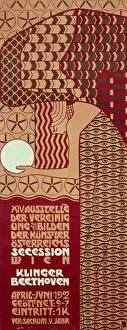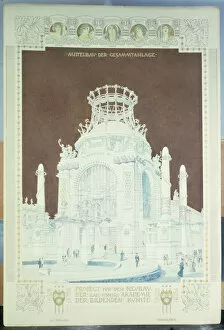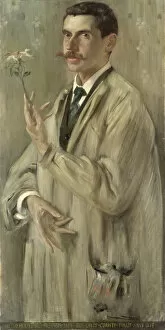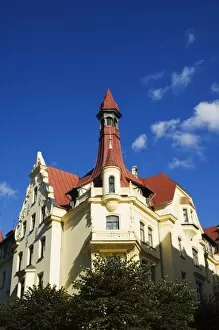Jugenstil Collection
Jugendstil, or Art Nouveau, was a revolutionary artistic movement that flourished in Europe at the turn of the 20th century
For sale as Licensed Images
Choose your image, Select your licence and Download the media
Jugendstil, or Art Nouveau, was a revolutionary artistic movement that flourished in Europe at the turn of the 20th century. Known for its organic forms, sinuous lines, and rich ornamentation, Jugendstil drew inspiration from nature and the arts and crafts tradition. The movement gained prominence through publications like "The Blood of Fish," published in Ver Sacrum magazine in 1898, which showcased the work of young artists. The style was also promoted through advertisements, such as one for an office furniture handler in Dortmund, and posters for exhibitions, like the 14th Exhibition of Vienna Secession in 1902. Artists like Otto Eckmann (1865-1902) embraced the movement, creating works that featured intricate details and vivid colors. The Jugendstil influence is evident in the design of buildings, such as the Stadtbahn Pavilion of the Vienna Underground Railway and the Academy of Fine Arts in Vienna, as well as in public art, like the statue of Mark Anthony and the Secession Building in Vienna. The movement's impact can still be seen today in the Jugendstil architecture on Elizabeth Street and other European cities, making it a lasting testament to the creativity and innovation of the era.









